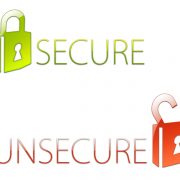Questions to Ask to Determine the Right Self-Directed IRA for You
At American IRA, we feature a list of the different types of IRA and retirement accounts available to people who want too self-direct. But we also recognize that this list can be a little bit difficult to navigate if you are a beginner. With that in mind, we thought we would take a new approach: what are the questions you will need to answer if you want to learn which Self-Directed IRA arrangement is right for your specific goals? Below, you will see the questions you should ask—and what kinds of insights they might generate.
Question #1: What are your retirement goals?
Your retirement goals will have a monumental impact on the type of strategy you choose. Do you want to retire by the age of 72? Then you will have to think about issues like required minimum distributions that begin with a certain type of account, but do not occur within a Self-Directed Roth IRA, for example. Do you want to retire by 65? This, again, will change your overall strategy.
You should also think about how you want your retirement to look. For example, if you have always had a very hands-on approach to something like real estate investing, do you envision a hands-off approach in collecting real estate income when you are retired? These questions will help you not only determine what you want your retirement to look like, but which types of accounts are best suited to get you there.
Question #2: How much do you want to save right now?
Your savings rate is going to be one of the top variables that determines your success. In fact, many personal finance experts like Dave Ramsey often mention statistics that point to your savings rate being the most important factor in your success.
Why does it matter? Because with a Self-Directed IRA, you are going to find that there are different accounts that allow you to do different things with your savings rate.
For example, let us look at the Self-Directed Solo 401(k). This account allows you to make tax-deductible contributions to your retirement that far outweigh what you can put into a Self-Directed Traditional IRA. This makes it possible for you to put money aside—up to the contribution limit—in a way that minimally interferes with your personal annual budget.
On the other hand, a Self-Directed Roth IRA does not have tax-deductible contributions, but it does make it possible for you to take money out of retirement accounts upon retirement age without the tax hit.
Again, determining which is best for you—or if multiple are best for you—will depend on your individual circumstances.
Question #3: What do you have already?
For some people, it is possible that they already have some degree of retirement put aside. This means that you can open up an entirely new list of questions based on how you might need to approach your retirement.
For some people, that might mean looking at different types of funding methods with a new Self-Directed IRA account. For example, it is possible to roll over one account into a Self-Directed IRA, if that is your goal.
Who are these methods best for? It is important that you reach out to a tax expert who can help you better understand your options. And when you reach out to a Self-Directed IRA administration firm, you will learn their role as a custodian for the account.
Interested in learning more about Self-Directed IRAs? Contact American IRA, LLC at 866-7500-IRA (472) for a free consultation. Download our free guides or visit us online at www.AmericanIRA.com.







